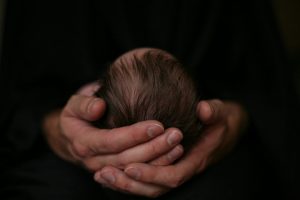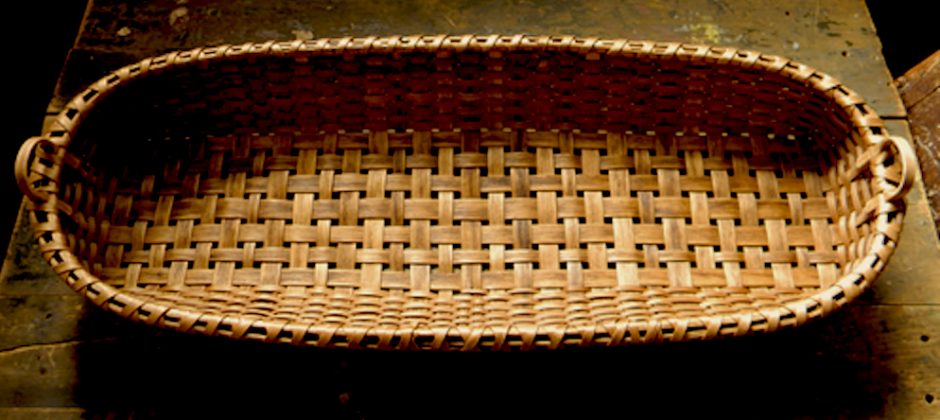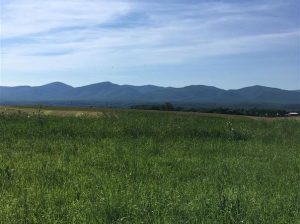If you wish, you can hear the sermon as it was preached from the UCJ pulpit. Simply click the play button below:
Delivered at the United Church of Jaffrey
August 27th, 2017
 A woman gives birth to a child.
A woman gives birth to a child.
To say this is one thing.
But to understand it is yet another thing altogether.
To say “A woman gives birth to a child” is to state a fact.
Another human being has entered the world.
This is a fact.
But to understand this statement, is to know its truth.
Roughly half of you, sitting in the pews this morning, understand – you women who have given birth to children, know that…
The truth, in this case, is far greater than the fact.
The truth is, that gradually, over almost a year, your body has strained and grown to contain something…
No, not something –
Someone
Someone with a heartbeat.
Someone who wakes you up in the middle of the night with a foot pushing out against the tight skin of your swollen belly.
Someone who has played havoc with your entire life – changing your every habit, from how you eat, to how you walk, to how and when (and how many times) you go running to the bathroom.
And then, at last, when it seems you cannot take it anymore, the time comes, and through hours and hours of cataclysmic pain, in which you feel you are split in two, that someone emerges into the world.
The mother brings her child to her breast.
This is the essential moment.
This moment – which occurs in the dazed aftermath of shattering pain – is the critical moment.
From transformation.
From Pain.
From suffering
Comes
Love.
*
A woman gives birth to a child.
The child is a boy.
He is placed on his mother’s breast.
But in this story, the mother experiences more than love.
She also experiences fear.
She is a Hebrew mother, and she is among an enslaved people.
The ruler of the land where she is enslaved – the Pharaoh of Egypt – has issued a decree.
The Pharaoh has given a command to the midwives.
If a Hebrew woman gives birth to a girl, it can live, but if a Hebrew woman gives birth to a boy, it must be killed.
So when this mother, discovers that the child on her breast is a boy, the love that she feels is quickly altered by fear.
Birth brings with it the shadow of death.
In this story, the love of a mother is pitted against the law of the land.
The Pharaoh has all the power.
The mother has none.
All the passion of new love is directed into the desperate search for some way out…
Some sliver of hope.
*
A woman gives birth to a child
The child is a boy.
The boy is Moses.
The story of this boy will grow to fill the forty chapters of the Book of Exodus.
The story of this boy will become the founding story that defines a people – the Jewish People.
The sweeping narrative, that begins with this birth, will tell the story of
the burning bush,
of the plagues of Egypt
of emancipation of the Children of Israel from bondage
of their miraculous escape through the parted waters of the Red Sea
of their years of wandering in the wilderness,
of the reception of the laws on Mount Sinai.
This story, which brings the Jewish people to the edge of the Promised Land, is the grand narrative out of which the Jewish religion finds its character.
Each year, during the Passover meal, Jews are encouraged to understand their lives as part of a narrative that stretches back to this story.
So, in a manner of speaking, the whole sweep of Jewish history can be considered to be one long narrative arc that extends the chapters of the Book of Exodus.
And let us not forget that, as Christians, this is also our story.
This is our story because Jesus of Nazareth was a Jew who moved from place to place teaching a new interpretation of the laws that were given to Moses.
Jesus lived, breathed, and taught within the context of a world that was shaped by Moses.
So, as we sit in church this evening, we too form part of the arc of a narrative that began with that birth.
The birth of a child who was marked, even as he suckled at his mother’s breast, with the threat of death.
*
Let’s sit with this for a moment.
It’s astonishing.
The story that mobilized a people,
that founded a nation,
that formed a religion,
that had immediate geopolitical consequences, and continued to influence the lives of untold billions of people over hundreds of generations,
all began in slave hut on the edge of a desert,
in the form a child who was marked at birth, for death.
How precarious!
It all hung by a thread!
The Pharaoh did not make idle threats.
This was the person who controlled what was arguably the most powerful military of the time –
this man was worshipped by his people as a God…
his power has been immortalized by the great pyramids…
His word was the rule of law.
So when the Pharaoh decreed that all male children of Hebrew women were to be killed, it meant that the whole society was mobilized toward a kind of genocide.
This should not be lost on us… the fact that Jewish culture was threatened, at its very outset by genocide.
And this historical circumstance, sadly, is not at all rare.
A child born to a slave mother in South Carolina in 1850 would have been in the same situation.
A child born to an Armenian mother in 1915 would have been in the same position.
A child born to a Jewish mother in Poland in 1939 would have been in the same position.
A child born to a Tutsi mother in Rwanda in 1994 would have been in the same position.
A child born to a Syrian mother in 2017 is, even now, in the same position.
Throughout human history, those in power have often followed the Pharaoh’s example.
Hitler. Stalin. Pol Pot. Idi Amin. Bashar Al-Assad.
Many leaders have chosen to “deal shrewdly” with those under their power.
What then, did the mother of Moses do in response to the Pharaoh’s awful threat?
she hid the child for three months. And when she could hide him no longer she took for him a basket made of bulrushes, and daubed it with bitumen and pitch; and she put the child in it and placed it among the reeds at the river’s brink.
The Pharaoh had power.
He had armies.
He had the rule of law.
Moses’ mother had bulrushes
And she had bitumen and pitch – naturally occurring asphalt like slime that was found around the Nile.
I can picture Moses’ mother weaving those bulrushes.
I can picture her covering the woven basket with pitch.
These were the desperate and almost futile acts of a woman trying to save her child, in spite of all the power laid out against her.
Why should she even bother?
What hope did she have?
It was a very slim hope.
The hope of some hastily woven bulrushes covered with sticky slime.
*
Last week, I visited my beloved in-laws who live a small hamlet called Port Republic, located in Virginia’s Shenandoah valley.
When we are there, Cary and I often walk up and out of the village to a little cemetery that is perched on a small hillock that rises out of the cornfields, and offers a spectacular view of the Blueridge mountains.
One day, as we were walking, we encountered a man standing out in front of his house.
“You headed up to the cemetery?” he asked.
“Yes.”
“Did you know that there’s an echo up there?” he said.
“An echo?”
“Yes,” he said. “Go up to the cemetery and then go to the place where the road splits. Turn around, face the Blueridge, and clap. You’ll see what I mean.”
“Cool!”
As we walked up to the graveyard, I had a feeling. I thought – this is going to make it into next week’s sermon.
And I was right.
We got to the spot.
I turned around.
faced the Blueridge.
And clapped.
It was beautiful!
Not only did we hear an echo – we heard that clap moving out across the landscape.
It came back at us from multiple directions.
It was really very cool!
And I wondered.
What makes this happen?
What quirk of the landscape makes it so that standing in this very specific spot, you can make a sound that will travel back to you from multiple directions?
But, being a minister, and not a scientist, I was not terribly interested in the physics of the question.
I recognized it as a wonderful metaphor.
How many children are born every day?
I asked Google that question, and this was the first hit.
UNICEF estimates that an average of 353,000 babies are born each day around the world. That equals 255 births globally per minute or 4.3 births every second.
Any one of those children – 4 of whom will be born before I can finish speaking this sentence – might live a life that moves across the landscape of the generations, and returns from multiple directions, enriching our lives in innumerable ways.
Any of those kids could be a Moses.
And any desperate act performed by a frightened mother – any seemingly futile attempt to weave bulrushes and spread bitumen and pitch – any act that defies the edict of a Pharaoh – could, again, be an act that echoes across the ages.
*
In this historical moment it is the easiest thing in the world to throw up your hands and say that its futile to do anything.
Very powerful forces are separating us.
Very powerful forces are telling us that some people are more valuable than others.
The politics of fear and the voices of hate seem to be everywhere.
What can be done about it?
Today’s story tells us that small acts have the power to move out across the landscape of human history.
Did Moses’ mother know this when she wove her basket?
Could she have known this when she covered it with pitch?
Could she have known this when, in great fear, she abandoned the baby in the among the rushes on the Nile?
No.
She could not have known these things.
We do not know what will be the results of our actions.
But we can act.
We can act against the Pharaoh’s edict.
We can act by an intention that is guided by the one power that the Pharaoh did not have.
For there was one power that Moses’ mother had, that the Pharaoh did not have.
She had a power that accumulates.
A power that moves out across the landscape.
From transformation.
From Pain.
From suffering
Comes
Love.
Amen.


